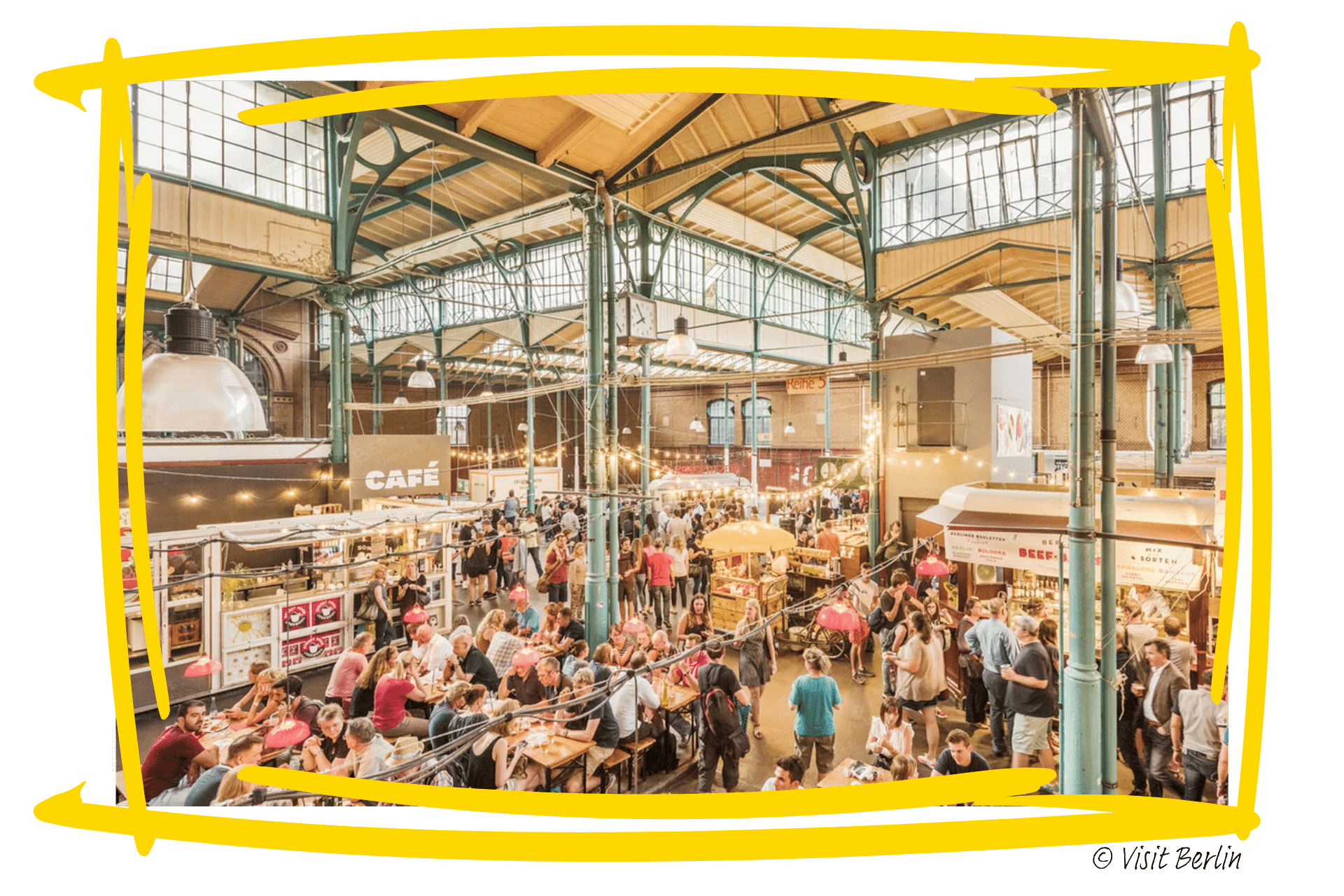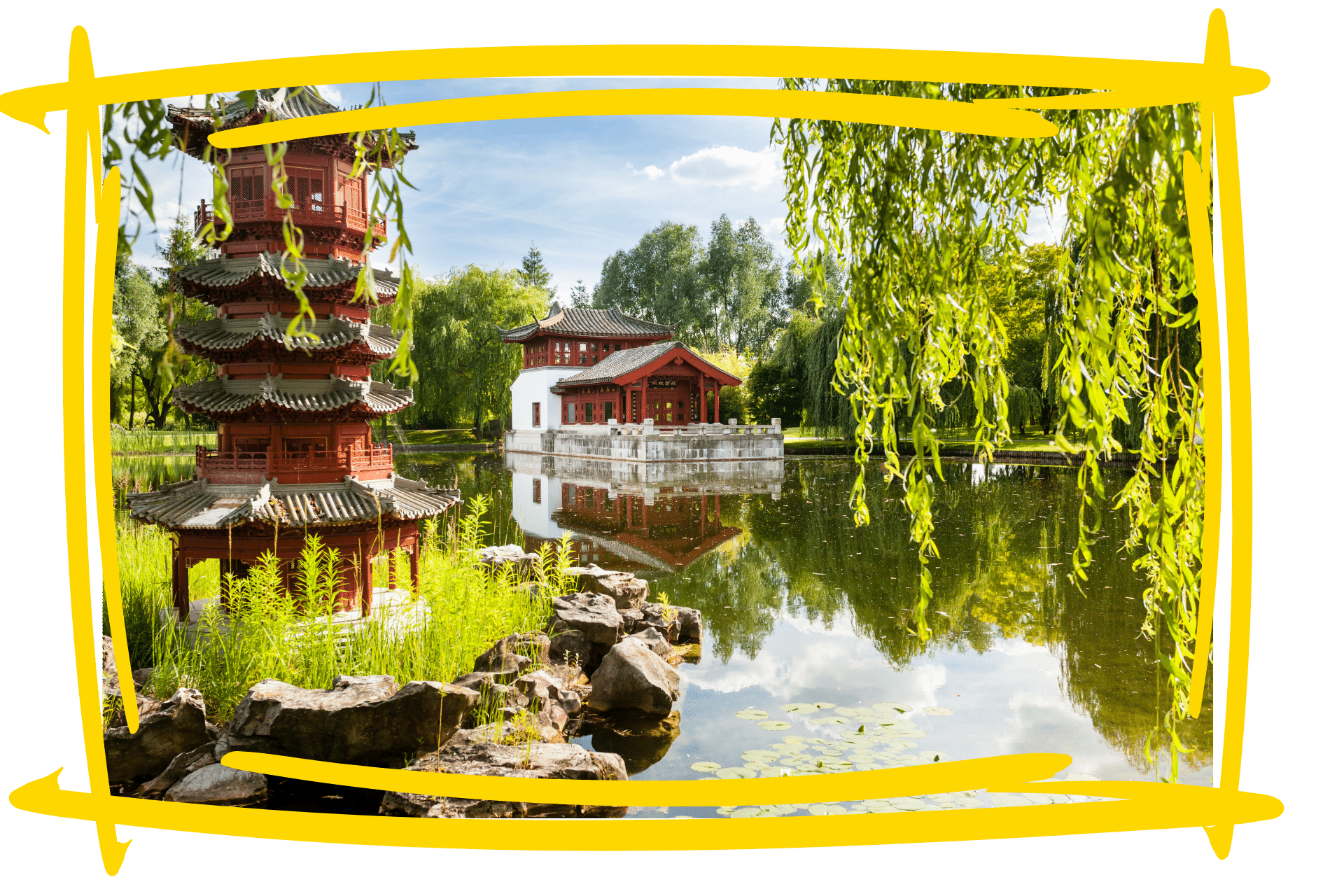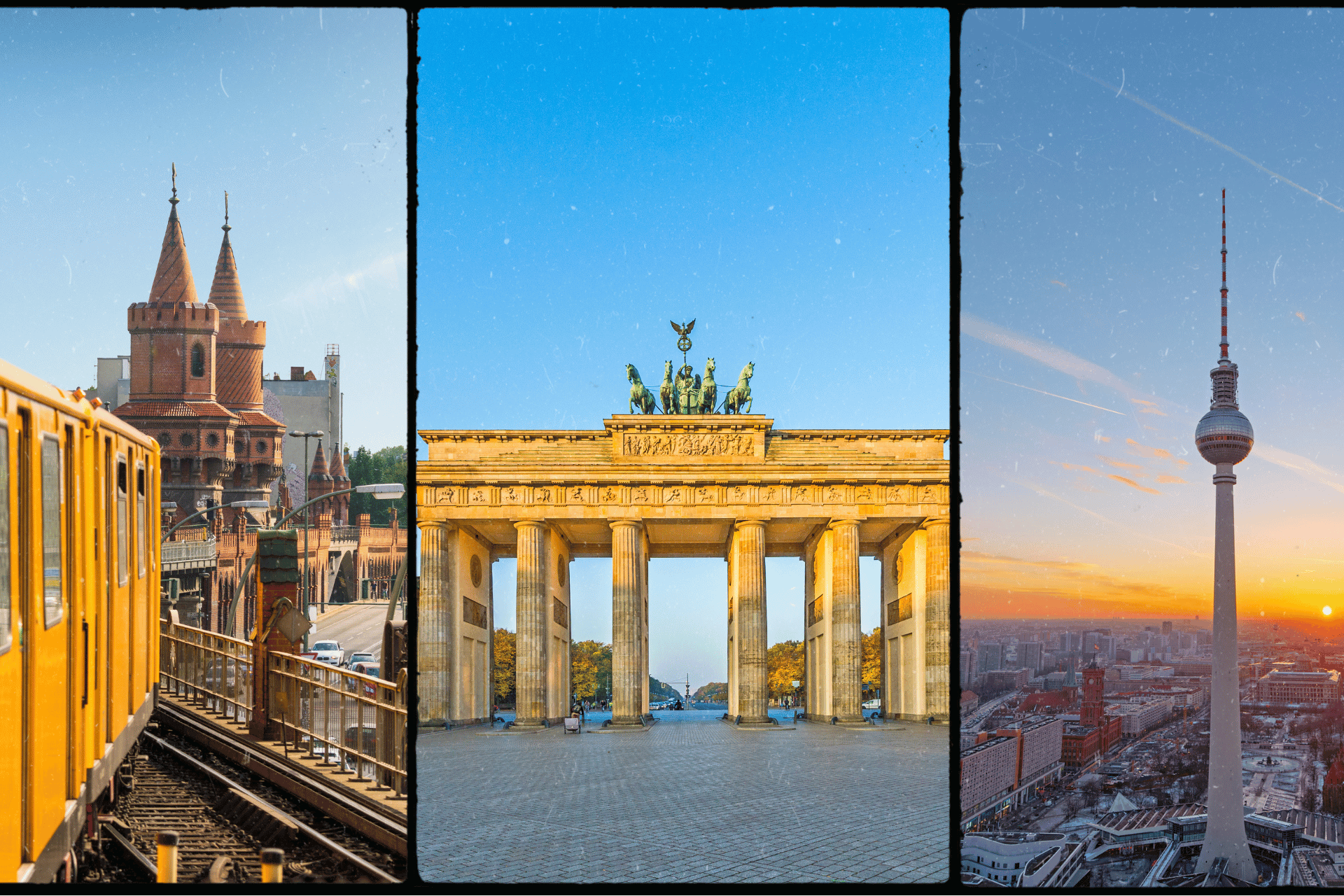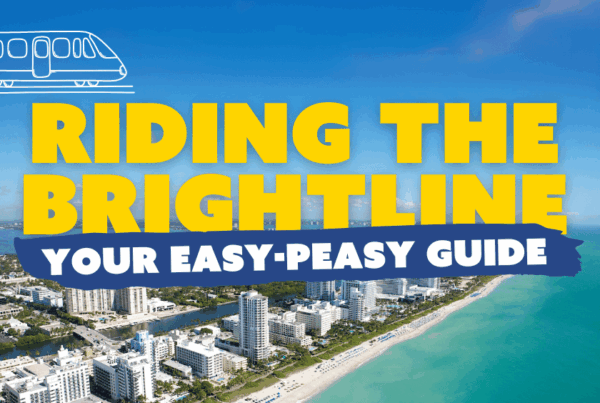Headed to Germany for EURO 2024? Ahead of the tournament this summer, which’ll see matches played across the country from the Olympiastadion in Berlin to the Volksparkstadion in Hamburg, we’re putting together quick guides to the host cities to help you figure out what to do when you’re not watching the footie.
Our first stop is Berlin, Germany’s capital and where the EURO 2024 final will go down on the 14th of July. Our quick guide will give you an idea of the must-do’s down to the must-eats, perfect for a quick break in the city.
The must do’s
A mix of glamour, grit, and more nightlife than you’ll know what to do with, Berlin is a city of full of the cutting-edge and world-changing history.
The Berlin Wall
The Berlin Wall, a profound barrier that not only physically divided Berlin but also symbolized the broader ideological divide of the Cold War era, was approximately 196 miles long and included concrete walls, barbed wire, guard towers, and a “death strip”—an area with sand, anti-vehicle trenches, and other obstacles to prevent escapes. Built after the end of WW2 to prevent those from East Germany (as it was known then) defecting to the west, controlled by the Allies, its famous fall in 1989 marked a pivotal moment in world history, leading to the reunification of Germany and the eventual end of the Cold War.
Although little is left of the physical barrier today, its legacy remains in places like Checkpoint Charlie, the Berlin Wall Memorial, and the East Side Gallery, a 1.3-kilometer-long section of the Wall that’s now an open-air gallery featuring murals by artists from around the world.
The Brandenburg Gate
 The most recognisable spot in the city and standing sentinel over Pariser Platz, the Brandenberg Gate once stood in no-man’s land, just behind the Berlin Wall. Inspired by the Propylaea, the gateway to the Acropolis in Athens, it became a symbol of the division between East and West Berlin. But when the Wall fell in 1989, it became a powerful symbol of German reunification instead.
The most recognisable spot in the city and standing sentinel over Pariser Platz, the Brandenberg Gate once stood in no-man’s land, just behind the Berlin Wall. Inspired by the Propylaea, the gateway to the Acropolis in Athens, it became a symbol of the division between East and West Berlin. But when the Wall fell in 1989, it became a powerful symbol of German reunification instead.
It stands at the end of Unter den Linden, a grand boulevard that leads to the former royal palace of the Prussian monarchs, and is the place to be on New Year’s Eve. We recommend seeing it at night for the full effect, when spot lights wash the columns and Goddess of Victory sculpture in a golden glow. Perfect picture moment, right there.
Museum Island
We know you’re in town for EURO 2024, but a little light museum hopping will do you good, and this is the place to do it. A UNESCO World Heritage site found on the northern half of an island that sits in the Spree – the river that runs through Berlin – the appropriately-named Museum Island is home sweet home to a whopping five of the city’s most significant museums, each showcasing various periods and regions.
As a super quick overview, here you’ve got the Altes Museum (Old Museum), known for its classical antiquities from the Greeks to the Etruscans and Romans, plus its rotunda inspired by the Pantheon in Rome; the Neues Museum (New Museum), with its focus on Egyptian artefacts, including that iconic bust of Nefertiti; the Alte Nationalgalerie (Old National Gallery), home to 19th-century icons by Caspar David Friedrich, Karl Friedrich Schinkel, Adolph von Menzel and more; the Bode Museum, which has got one of the largest numismatic (that’s coin collecting, to you and me) collections in the world; and – deep breath – the Pergamon Museum, famous for its monumental reconstructions of archaeological structures, like the Pergamon Altar, the Ishtar Gate of Babylon, and the Market Gate of Miletus.
Markthalle Neun

Markthalle Neun, or Market Hall Nine, is a historic market hall located in the Kreuzberg district of Berlin. Originally opened in 1891, it was revived in 2011 when a group of food enthusiasts and local entrepreneurs took over its management with the aim of restoring its original purpose and enhancing its role as a community hub.
Today, it blends tradition with contemporary culinary trends, with fresh produce, artisanal foods, and street food – both local and international. It also holds a bunch of events, like Street Food Thursday, Cheese Berlin, and Naschmarkt, a sweets market held several times a year with handmade confectioneries, and pastries from local artisans.
Where to grab a pint
Like us Brits, grabbing a pint is a national pastime here. From beer gardens to proper pubs and Bavarian beer halls, you’re not short of watering holes in this town.
Beer gardens
If you’re in town for EURO 2024, then you’ll be after a pint (or several) at some point. And what with it being beer garden season, you’ll be after one of those too. Berlin won’t disappoint.
Prater Garten is one of Berlin’s oldest and most beloved beer gardens, located in the Prenzlauer Berg district. Established in 1837, it has a long history as a popular gathering place for Berliners and visitors alike, although the number of visitors does outstrip the locals these days, it’s still a solid choice. Expect traditional German bevs, including their own Prater Pils, and classic German scran, like bratwurst and schnitzels.
BRLO, a craft brewery and beer garden, gets it name from the old Slavic word for Berlin. Founded in 2014, it’s quickly become one of the city’s top craft beer destinations. Found in a former freight yard near Gleisdreieck Park in the Kreuzberg district. Its repurposed shipping containers give it a distinctive and modern industrial look, whilst its offerings run the gamut from traditional German styles like pilsner and hefeweizen to more experimental and international stuff. Faves include Helles, Pale Ale, and Berliner Weisse. There’s an on-site kitchen too, which offers a menu of modern German cuisine with a focus on seasonal and regional ingredients.
Zenner is a historic beer (and wine) garden in the Treptow-Köpenick district of the city. Another oldie, it’s been around since the mid-19th century. The location is what really sells this one: it’s right on the banks of the Spree River, with perfect views of the water. Think wooden tables and plenty of trees for shade. There’s a selection of German beers on tap, including popular brands and local brews, but they also serve wine and other bevs too if a pint’s not your thing. They often hold live music events too, so try and catch one of those if you can.
Eckkneipen, AKA proper pubs
 Eckkneipen are the classic corner pubs of Berlin – ‘proper’ pubs, your dad would say. Frequented largely by locals, but not unfriendly to visitors, these are your traditional style of pub, with sports memorabilia, old enamel beer signs, and vintage taps all but guaranteed. All about the analog, you’ll be lucky if you get Wi-Fi at these places, so bear that in mind. Don’t expect the food to be Michelin-star, and most don’t sell food at all, so don’t be surprised if you walk into a cloud of smoke – they’re exempt from the city’s indoor-smoking ban.
Eckkneipen are the classic corner pubs of Berlin – ‘proper’ pubs, your dad would say. Frequented largely by locals, but not unfriendly to visitors, these are your traditional style of pub, with sports memorabilia, old enamel beer signs, and vintage taps all but guaranteed. All about the analog, you’ll be lucky if you get Wi-Fi at these places, so bear that in mind. Don’t expect the food to be Michelin-star, and most don’t sell food at all, so don’t be surprised if you walk into a cloud of smoke – they’re exempt from the city’s indoor-smoking ban.
Oberbaumeck, Bareneck, and Berliner Bürgerstuben are just three of these throwbacks, but really, eckkneipen aren’t really the sort of thing you look up on Tripadvisor – they’re the kind of place you just stumble upon when walking through the city.
Berlin’s beer halls
An integral part of the Berlin’s culture and history, Bavarian beer halls have a long tradition here. They can teeter on the touristy gimmick sometimes these days, they’re still a solid shout for reliable food and drink at a reasonable price. They’re not known for being quiet watering holes, so brace yourself for a very lively atmosphere, especially on Fridays and at the weekend.
Augustiner am Gendarmenmarkt is a traditional beer hall and restaurant located in the heart of the city, near the historic Gendarmenmarkt square. It’s part of the well-known Augustiner-Bräu brewery from Munich, one of Germany’s oldest and most prestigious breweries, founded in 1328. Designed to evoke the feel of a classic Bavarian beer hall, featuring wooden interiors, long communal tables, and traditional Bavarian decor, it’s a warm, inviting (and busy) dose of Bavarian culture in Berlin.
Hofbräu Wirtshaus is also in the center of Berlin, near Alexanderplatz. This one’s part of the Hofbräuhaus franchise, which originates from Munich’s famous brewery Hofbräuhaus, founded in 1589. Like Augustiner am Gendarmenmarkt, its style is classic Bavarian beer hall. It’s large in size too, making it good for bigger groups. It serves a wide range of Hofbräu beers, all brewed according to traditional Bavarian purity laws, and has a menu that v features a variety of traditional Bavarian and German dishes, like roasted pork knuckle (for the brave) and Bavarian white sausages.
Berlin’s best bites
The food here has an emphasis on the hearty and and the delicious, with plenty of meat and potatoes to go around, but there’s some great sweet treats to be had too.
Döner Kebab
It’s not just the Brits that love a döner kebab – it’s practically a Berlin institution! Actually, it’s thought to have come into existence as we know and love it right here in this city in 1972, when Kadir Nurman put some juicy grilled meat into a piece of pita for the first time, and the rest is history. You’ll find kebab stands all over the city, and all over the country, but Berliners say that proper döner kebab only exists in their city…
Buletten
 Another staple of Berlin cuisine easy to find on almost every corner (and in many a pub) are bulleten – juicy meatballs. Simple, but perfect. As a fast food, you’ll probably find them in a bun with ketchup or mustard, but Berlin home cooks like to serve ’em with mashed potatoes and mushy peas or fried onions. See, the Germans just get us.
Another staple of Berlin cuisine easy to find on almost every corner (and in many a pub) are bulleten – juicy meatballs. Simple, but perfect. As a fast food, you’ll probably find them in a bun with ketchup or mustard, but Berlin home cooks like to serve ’em with mashed potatoes and mushy peas or fried onions. See, the Germans just get us.
Pfannkuchen
Pay attention , ‘cos you’ll have to keep up with us for a sec here. ‘Pfannkuchen’ translates to pancake, but they ain’t like an American pancake or a French crêpe. These round, deep-fried pastries are also known as ‘Berliners’ across Germany, apart from in Berlin, where they’re actually called Pfannkuchen. Still with us?
Anyway, they’re sort of like a donut, and traditionally they’re filled with plum or strawberry jam but there’s loads of varieties – dusted with sugar, glazed, filled with chocolate custard if that’s what you fancy. Even filled with egg nog, but we might skip that one. You’ll find them in pretty much any bakery in Berlin.
Hidden gems
A lot of the history here is quite hard-hitting, but there’s plenty of spots which sit on the lighter side to check out too.
Café am See at Britzer Garten
A great shout if you’ve brought the kids with you, Café am See is a very distinct little café located within the picturesque Britzer Garden, a large and beautifully landscaped park in the Neukölln district of Berlin. Designed with the so-called ‘earth construction method’, an approximately 8 meter high mound of earth was raised, shaped, and then surrounded by concrete. When set, the earth was removed again through cut-out windows and door openings. What we’re left with is a unique building, alright. Right by a lake, its outdoor terrace provides stunning views of the water and the park’s lush greenery, making for a nice tranquil spot for a bit of peace and quiet.
After a snack and a drink, explore the rest of the park – there’s the botanical displays, as well as walking and biking trails, and they often put on concerts and cultural events too. Found at Sangerhauser Weg 1, in the Neukölln district of Berlin, it’s easily accessible by public transportation, with bus and U-Bahn stops both nearby.
Gardens of the World
 Another great shout for the kids is Gardens of the World (Gärten der Welt), a unique and expansive park located in the Marzahn-Hellersdorf district of Berlin. It’s known for its themed gardens, each representing different cultures and horticultural traditions from around the world.
Another great shout for the kids is Gardens of the World (Gärten der Welt), a unique and expansive park located in the Marzahn-Hellersdorf district of Berlin. It’s known for its themed gardens, each representing different cultures and horticultural traditions from around the world.
There’s the Chinese Garden, one of the largest of its type in Europe (think pavilions, water features, and bridges), the Japanese Garden, with its traditional tea house, stone lanterns and carefully pruned shrubs, the Balinese Garden (housed in a greenhouse with Balinese statues and evoking a jungle), and an Italian Renaissance Garden. That’s just a few of them!
There’s also a cable car, a large hedge maze, and a playground here too. Just fun all around. Located at Blumberger Damm 44, 12685 Berlin, it’s easily accessible by public transportation. The nearest U-Bahn station is Kienberg (Gärten der Welt), on the U5 line.
Urban Nation
Urban Nation is a contemporary art museum and cultural institution in Berlin dedicated to urban and street art. Located in the Schöneberg district, the museum opened in September 2017 and has since become a significant hub for both local and international street artists.
The museum itself is an architectural marvel, with a façade that often features large-scale murals that are periodically updated, making the building a living canvas that evolves with the art it houses. Nice! A distinctive feature of Urban Nation is also the Project M/ series – curated exhibitions that transform the museum’s exterior and interior spaces into immersive art experiences. Best of all? Admission is free.
How to get around Berlin
They say you can get to anywhere in Berlin within 45 minutes, such is the level of public transport in this city, from its famous yellow subway carriages on the U-Bahn to double decker buses.
By train
Using the U-Bahn
The U-Bahn is Berlin’s subway system. With trains running every 5-10 minutes during the day, and every 15-20 minutes until late at night, the U-Bahn is the best way to get around. The network consists of 9 lines and a whopping 175 stations covering 97 miles of track, so it’s really easy to catch from pretty much anywhere.
The U1, U3 and U2 lines are good for east-west connections, while the U8 is good if you plan on being out late late. If you’re after the sights, there’s even a new ‘cultural’ line, U5, dedicated to getting you to all the big-shots, like the Reichstag, the Brandenburg Gate, Museum Island, and Alexanderplatz.
Using the S-Bahn
Less frequent and not quite as well connected as the U-Bahn, the S-Bahn is best for longer distances or for venturing to the outskirts of Berlin. There’s 15 lines on both elevated and underground tracks. The Ring line reaches different neighbourhoods without going through the centre, whilst one of the connecting trains between Zoologischer Garten and Ostbahnhof gives you some beautiful glimpses of the city above ground.
The S-Bahn is what you’ll use for day trips outside Berlin, like the historical district of Spandau, the city of Potsdam, or the stunning lakes of Wannsee, Müggelsee, and Schlachtensee.
By bus
Slower and more on the unreliable side, buses and trams will take you to the more remote parts of the city, but they’ll also give you a great view of the city too.
Trams mostly run in the former East Berlin, whilst busses cross every corner of the city with a mahoosive network of 152 lines. Take either 100 or the 200 double decker bus for the best views, as they’ll wind you through Berlin’s most famous landmarks. Get on quick at the starting stop in Alexanderplatz and you might just bag the front window seat on the top deck.
Understanding the fares
There’s three fare zones, and tickets are valid for all forms of public transport: Zone A is limited to within the S-Bahn ring and includes the city centre. Zone B ends at Berlin’s city limits. Zone C includes the surrounding area (including Berlin Brandenburg Airport). The concession fare is for children from 6 up to and including 14 years of age. Children under 6 ride free.
You can buy tickets at one of the many BVG and S-Bahn Berlin retail outlets or at the ticket machines right in the station. Or you can download the BVG Tickets app, where you can pay for tickets using your card or Apple/Google Pay and skip the queues for the machines. DON’T forget that if you opt for physical tickets, you must validate them BEFORE you board the train or as soon as you board the bus or tram. Don’t validate and you risk a hefty fine. If you get them through the app, you can select whether they’re for ‘immediate’ use or for later.
| Ticket | Fare | Concession fare |
| Short journey | € 2,20 | € 1,70 |
| Single ticket AB | € 3,20 | € 2,00 |
| Single ticket ABC | € 4,00 | € 2,90 |
| 4-journey ticket AB | € 10,00 | € 6,20 |
| 24-hour ticket AB | € 9,50 | € 6,00 |
| 24-hour ticket ABC | € 10,70 | € 6,50 |
| 24-hour small group ticket AB** | € 29,00 | – |
| 24-hour small group ticket ABC** | € 31,00 | – |
**up to 5 people
How to get to the Olympiastadion in Berlin for EURO 2024
On EURO 2024 matchdays, public transport will be the quickest and easiest way get to Olympiastadion Berlin. You can either take the U-Bahn line U2 or the S-Bahn lines S3 or S9 to the stadium. Plus, some special S5 trains will run to the Olympiastadion during EURO 2024. But note that not all of them will go to the stadium – pay attention to the displays and announcements on the platform.
If you take U-Bahn, get off at the Olympia-Stadion stop, if you use the S-Bahn, get off at Olympiastadion.
By taxi
Berliners pretty much stick to public transport to get around the city, but ride-hailing apps like UBER, Sixt, FREENOW and Bolt are all available in Berlin, and even tend to be slightly cheaper than a traditional taxi.




